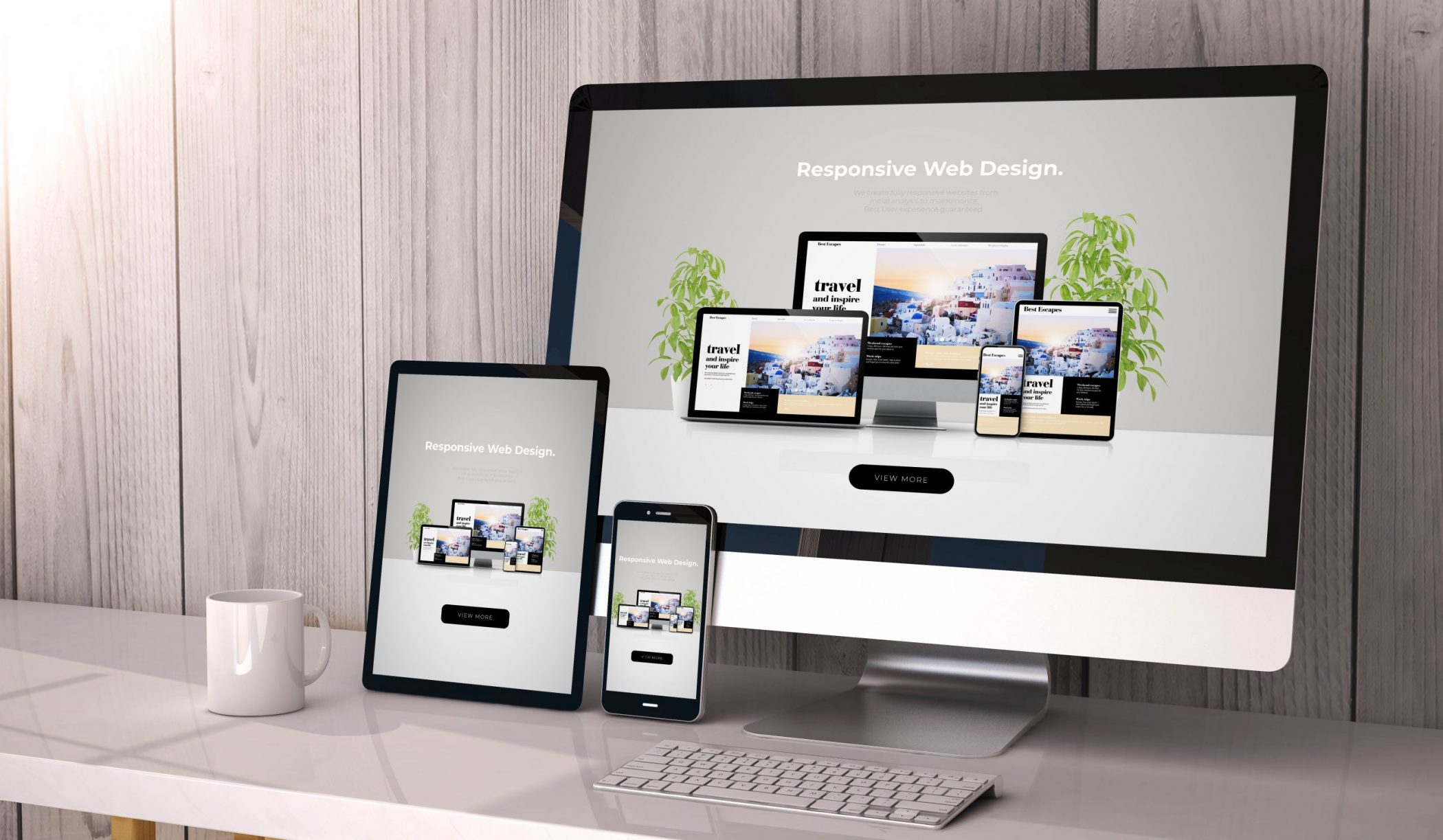Just How to Efficiently Integrate Visual Appeals and Capability in Internet Style
When developing an internet site, you require to strike a balance in between visual appeals and performance. It's not nearly looking great; your style needs to additionally offer a purpose and guide customers properly. By concentrating on simplicity and intuitive navigating, you can produce an appealing experience. What aspects really improve functionality while preserving visual allure? Let's explore the essential principles that can result in an unified blend of beauty and function.
Comprehending the Value of Appearances and Functionality
Comprehending the equilibrium between aesthetic appeals and performance is necessary for developing an efficient individual experience when you design a site. A visually attractive website grabs focus, yet it's the performance that maintains individuals involved. If your site looks terrific but is difficult to navigate, site visitors will quickly lose passion and leave.Consider your target market and what draws them in. You wish to create a layout that reflects your brand name while making sure ease of use. Streamlined designs, user-friendly navigating, and clear contact us to activity can improve both aesthetics and functionality.

Principles of Efficient Web Style
To produce an effective website design, you need to abide by numerous essential principles that improve both user experience and visual charm. Focus on simpleness; a tidy layout helps users browse quickly. Use a constant color pattern and typography to keep comprehensibility throughout your site. This fosters experience and trust.Next, assure your style is responsive. Customers access websites on numerous gadgets, so your design ought to adapt seamlessly. Take notice of visual power structure; highlight important aspects with dimension, shade, or placement to direct users' focus.Finally, incorporate adequate white space. It stops clutter and makes web content more digestible. Remember, effective internet style balances visual appeals and capability, so every style selection must offer a function. By adhering to these principles, you'll create a site that's not only aesthetically enticing but also user-friendly, inevitably keeping site visitors engaged and encouraging them to return.
Focusing On Customer Experience
When focusing on user experience, you'll wish to start by understanding what your individuals absolutely require. Simplifying navigating layout can make a substantial difference in how quickly they find what they're searching for. Likewise, boosting aesthetic power structure aids direct their attention to the most crucial aspects on your website.
Understanding Customer Needs
Understanding customer needs is necessary for creating an appealing web experience that keeps visitors returning. To accomplish this, you need to recognize the goals and choices of your target market. Beginning by performing individual research study, like meetings or surveys, to collect understandings on what users worth most. When interacting with similar websites, pay attention to their pain points and obstacles. This info permits you to tailor your style, making sure performance lines up with user expectations. Additionally, think about creating individual personalities that represent various sectors of your audience, helping you imagine their needs throughout the layout process. When you focus on recognizing customer needs, you create a web site that not just looks fantastic however likewise delivers a smooth, enjoyable experience that cultivates loyalty.
Streamlining Navigating Style

Enhancing Visual Power Structure
A solid visual pecking order is essential in assisting users through your site and guaranteeing they engage with key content. To achieve this, use color, size, and spacing purposefully. Make essential components like headings bigger and bolder than body text, attracting interest quickly. Utilize contrasting colors to highlight phone call to activity, urging clicks. Furthermore, use enough white area to separate sections, making content digestible and inviting.Consider the flow of details; set up aspects practically, leading users' eyes from one factor to the next. Use visual cues, like lines or arrowheads, to route attention. By focusing on visual hierarchy, you boost user experience and increase the likelihood of conversions, ensuring your website is both visually pleasing and functionally effective.
Shade Theory and Its Influence On Usability
While selecting the best colors for your website may look like a minor information, it considerably affects usability and user experience. Color influences just how customers view details and can impede or enhance navigation. For example, contrasting colors can aid important aspects stand out, making it much easier for site visitors to discover what they need.Additionally, take into consideration the psychology of colors: blue usually inspires count on, while red develops necessity. Knowing your target audience can direct your shade options, assuring they resonate well.Moreover, regular shade plans help construct brand name identity, making your website a lot more remarkable. Nevertheless, be cautious-- as well lots of shades can overwhelm users. Adhere to a restricted scheme that matches your material and maintains clarity.Incorporating access is also crucial; validate your shade mixes get along for those with aesthetic impairments. By thoughtfully using color concept, you'll improve usability and produce a more engaging customer experience.
Typography: Balancing Style and Readability
Shade selections established the stage for your web site, but typography plays an equally important function in boosting customer experience. You desire your text to communicate plainly while additionally mirroring your brand's personality. Start by choosing fonts that are not only appealing but likewise readable. Sans-serif font styles frequently function well for digital displays, as they're much easier website to check out at numerous sizes.Maintain a power structure by using various font sizes and weights; this overviews customers with your web content effortlessly. Take into consideration line spacing and letter spacing; as well limited can discourage visitors, while too loose can interfere with the flow. Limit your typeface options to two or 3 to keep the design cohesive.Finally, always check your typography across different devices and internet browsers. What looks great on one screen may out one more. Balancing design with readability assurances that your message reverberates, keeping your target market educated and involved.
Receptive Style: Making Looks Service All Instruments
To guarantee your site looks terrific on any tool, you'll need to embrace responsive layout concepts. This strategy assurances your site adapts to different display sizes, providing an ideal user experience. Begin by utilizing fluid grids and versatile pictures that scale effortlessly. Instead of repaired dimensions, select percentages and family member systems, enabling your layout to adjust dynamically.Next, execute media queries in your CSS. These allow you use different styles based upon tool qualities, like screen size. By doing this, you can keep visual allure while assuring functionality.Don' t forget regarding touch targets; make particular buttons and links are simple to tap on smaller sized displays. Focus on necessary web content, so customers can quickly browse your website no matter their device. By focusing on these components, you'll develop an interesting, aesthetically appealing experience that meets the requirements of all individuals, whether they're on a desktop, smartphone, or tablet computer .
Carrying Out Usability Screening for Continual Enhancement
To boost your website design, you need to set clear usability goals that line up with user demands. By performing customer examinations, you can gather important feedback on just how actual people engage with your website. Analyzing these outcomes will aid you make educated renovations and produce a much more reliable individual experience.
Specifying Usability Goals
While aesthetic appeals can draw users in, specifying functionality objectives is important for guaranteeing their experience continues to be enjoyable and smooth. Start by recognizing what you desire users to accomplish on your site (website design london Ontario). Consider their tasks, behaviors, and requirements. Are they searching for info, purchasing, or signing up for an e-newsletter? Develop clear benchmarks to gauge success, like task conclusion rates or time on task. Focus on instinctive navigating, available content, and receptive style to boost functionality. Routinely revisit these objectives as user expectations evolve. By specifying usability goals, you produce a framework for examining and boosting your internet site's performance. This concentrate on functionality not only increases customer satisfaction yet also strengthens the general effectiveness of your layout
Carrying Out User Tests
Carrying out individual tests is necessary for fine-tuning your internet site and guaranteeing it satisfies your target market's requirements. Start by identifying your target customers and developing a test plan that describes your objectives. Utilize a mix of quantitative and qualitative methods, such as surveys, interviews, and task-based observations, to collect thorough feedback. Invite participants to browse your website while you observe their interactions and keep in mind any difficulties they experience. Urge open dialogue to record their thoughts and feelings regarding the style and functionality. Maintain sessions brief and concentrated, guaranteeing you cover essential areas without frustrating users. Make certain to document all findings, as this info will certainly be indispensable for making informed design decisions that improve both visual appeals and usability.
Evaluating Test Results
Just how can you successfully examine the outcomes of your functionality examinations to drive continuous enhancement? Start by categorizing responses into typical themes. Try to find patterns in customer actions that highlight discomfort points or areas for improvement. Usage measurable information, like job conclusion rates and time on task, to determine functionality objectively. Do not neglect to think about qualitative understandings from individual comments; they commonly disclose underlying problems that numbers can not reveal. Focus on the most impactful findings and create workable items for your design team. Remember, it's about iterating-- implement changes, after that test once again. This cycle of screening, evaluating, and refining aids you balance aesthetics and functionality, guaranteeing your website fulfills individual needs efficiently while preserving aesthetic charm.
Frequently Asked Inquiries
Exactly how Do I Select the Right Color Scheme for My Web site?
To choose the best shade palette for your site, consider your brand's individuality, target audience, and psychological impact (website design london Ontario). Use color psychology, produce consistency, and guarantee readability. Test mixes to see what resonates finest with site visitors
What Tools Can Help With Internet Design Aesthetic Appeals and Performance?
You can use tools like Adobe XD, Figma, and Map out to improve your website design's looks and functionality. These platforms use intuitive interfaces, partnership functions, and pre-made layouts to simplify your innovative process and enhance your designs.
Just How Can I Integrate Animations Without Endangering Functionality?
To include animations without endangering capability, focus on subtle impacts that enhance individual experience. Use CSS animations for smoother communications, guarantee quick lots times, and examination on various devices to keep performance while adding aesthetic charm.
What Prevail Mistakes to Prevent in Website Design Visual Appeals?
When making, avoid messy formats, poor color choices, and irregular typefaces. Do not forget mobile responsiveness, as it can push away individuals. Verify your style straightens with your brand name, developing a smooth experience that involves visitors efficiently.
Just how Frequently Should I Update My Website's Style for Ideal Appearances?
You should update your internet site's style every 1-2 years to maintain up with patterns and keep perfect aesthetic appeals. Routinely restoring visuals assists engage assurances and site visitors your site continues to be easy to use and appealing. When you develop a website, comprehending the equilibrium in between aesthetics and capability is necessary for producing an efficient individual experience. To create an effective internet style, you require to adhere to a number of key concepts that boost both user experience and aesthetic charm. Customers gain access to internet sites on different gadgets, so your layout needs to adapt flawlessly. When prioritizing user experience, you'll want to start by understanding what your users truly need. Beginning by carrying out individual research, like studies or interviews, to collect insights on what users value most.